|
Traditional cleaning of the home requires various items to get the job done that can end up in the bin afterward, such as paper towels, plastic bags, sponges, and chemical products that are bad for the environment. This is why you should switch to zero-waste cleaning of your home. What, exactly, is zero-waste cleaning? This type of cleaning doesn’t require all those disposable items. Instead, it focuses on making use of tools and items that are strong and sustainable so that they can be reused many times in the future. Is a zero-waste cleaning routine really possible? If you’re wondering this, read on to find out how to not only make it possible but pleasurable. READ FULL ARTICLE 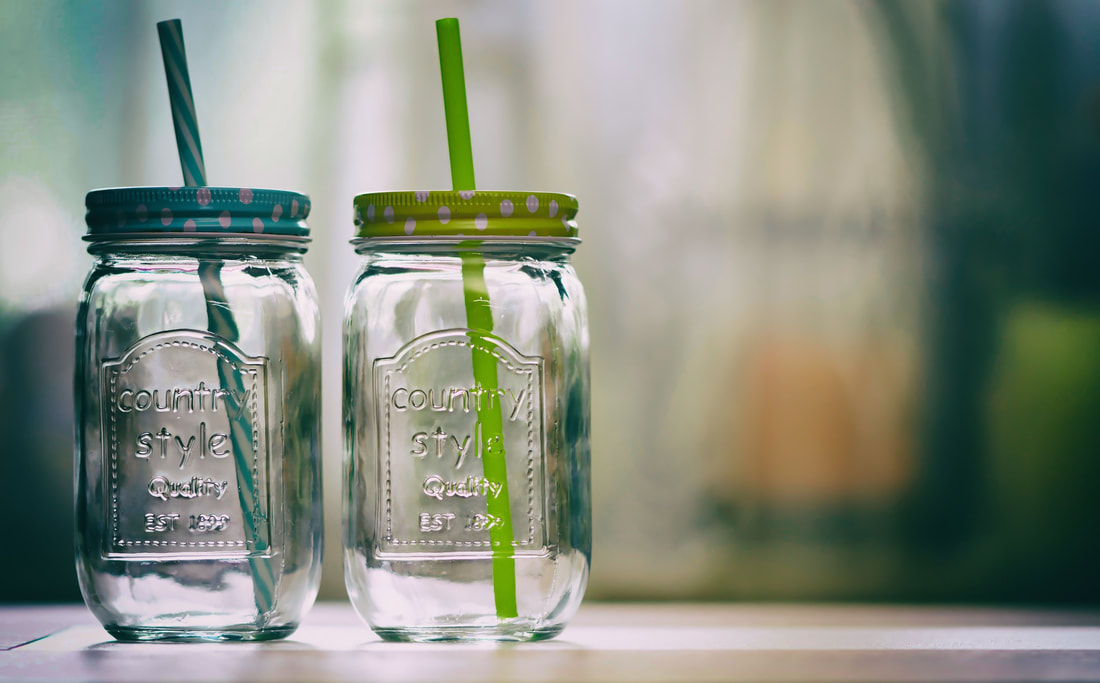 There's always time to shift to a more eco-friendly lifestyle. It can seem a little stressful to take on these new habits, but it's actually easier than you think – especially when it comes to Plastic-Free July. This global movement pushes people to limit their single-use plastic waste at home with a few simple tips and tricks. If you want to work toward a healthier future for life everywhere, look no further. Here are some easy ways to celebrate Plastic-Free July. 1. Avoid Utensils With Takeout When you order from your favorite restaurant, it will likely slip some extra forks, napkins and straws into your bag. This habit creates waste, especially if you have those items at home. Make sure to leave a comment or check a box that says not to include any utensils. It's a small effort that can make an impact over time. 2. Ditch Plastic Water Bottles There's no better opportunity to transition to a reusable water bottle. If you still purchase plastic ones at the store, it's time to stop. Researchers expect we'll use and toss more than 500 million plastic water bottles every year by 2021. These containers contribute to environmental disasters that plague our land and oceans. A simple effort on your part can directly impact those numbers. Today's reusable water bottles come in all shapes and sizes, so you're sure to find something you like. 3. Try Sustainable Cleaning Products There's a significant chance that you'd notice some plastic if you took a look inside your cleaning supply cabinet. Fortunately, you can avoid harmful materials when you choose eco-friendly products. These days, it's easy to find companies that prioritize this initiative. Search for refillable sprays, zero-waste soap and reusable wipes to keep your home clean. 4. Use Reusable Grocery Bags Why not switch to reusable grocery bags? The plastic bags you reach for at checkout are among the top debris found along coastlines globally. A few canvas tote bags and reusable produce pouches can make your supermarket experience a breeze. Plus, you'll create less plastic waste. You can keep your reusable items inside your car so they're always ready when you need them. 5. Buy Eco-Friendly Food Containers If you ever need to pack food for work or store last night's leftovers, it's always nice to have reusable containers handy. Your meals should stay fresh throughout the week – and you won't need to store them with plastic wrap. A container can also help you bring homemade food to places where you're inclined to spend money on takeout. 6. Recycle Used Motor Filters You may not think about how your car's maintenance contributes to pollution. Whenever you switch out your vehicle's oil, it's essential to make sure you don't cause any spills. Additionally, you should recycle any objects or liquids to ensure they create a lesser impact on the environment. Otherwise, these items could affect our ecosystems. 7. Purchase More Bulk Items You can save a lot more money than you expect when you purchase bulk seeds, nuts and oats. Plus, you won't be stuck with a small package you need to throw out and replace a few weeks later. If your current supermarket doesn't offer many options, it's smart to look around for dedicated bulk stores. All you'll need are a few reusable options to stow your items as you shop this Plastic-Free July. 8. Grow Herbs at Home There's probably a chance that the herbs you buy come inside a small plastic package. Why not grow your favorites at home? You can grow almost any herb with a few supplies. This experience also helps you learn how to garden – you could even grow vegetables if you have enough outdoor space. 9. Consider Body Wash Bars When you buy plastic shampoo, conditioner and body wash bottles, it isn't easy to recycle them. As a result, they often end up in a landfill. You can try traditional soap bars if it's too much to transition to a new shampoo or conditioner. These bars use less packaging, as they typically come inside cardboard containers. You can also use these bars to shave your legs. 10. Pick a New Gum It may surprise you to know that gum contains several plastic-related additives within its base. That's what makes it chewy. If you regularly chew gum, it's probably time to switch to an alternative. There are many plastic-free, vegan and biodegradable options that have recently become popular. They have the same taste and consistency as regular gum. Try These Tips for a Successful Plastic-Free July Use these ideas to start your personal sustainable journey this Plastic-Free July. With a little effort, you can make a big difference. Bio: Emily Folk is passionate about environmental sustainability and more of her work can be found on her site, Conservation Folks, or follow her on Twitter for her latest updates.  Population growth and inequitable resource distribution are intensifying the need to reduce water usage in agriculture. According to the United States Department of Agriculture, the agricultural industry accounts for 80% of the United States' water use, a number that could easily be mitigated by incorporating more sustainable methods. Reducing agricultural water use preserves natural resources, prevents unnecessary waste and improves the cost-effectiveness of cultivating various crops. Farmers who rely on water-intensive agriculture must spend thousands of dollars on infrastructure, but the benefits may not justify the investment. A sustainable solution to reduce agricultural water use goes beyond utilizing more efficient watering methods. Helping farmers build healthy soil so less water is needed is a great place to start. Incorporating cover crops to retain moisture and choosing location-specific plant species also plays a role in a farm's water management plan. Perhaps most importantly, harvesting and storing water from other resources is of the utmost importance. Instead of relying on groundwater and stormwater, many farmers invest in infrastructure that enables them to capture extra water. Collecting rainwater and maintaining a reliable water supply backup contribute to the overall resilience of the farm. 1. Build Healthy Soil Issues such as soil runoff, which pollutes waterways and removes vital topsoil, could easily be mitigated by supporting healthy soil. If you are growing an annual crop like soybeans in soil that is devoid of any real nutrient value, it is much more likely that soil will be easily washed away in a major storm. Not only does the lack of nutrients affect the health and production of the plant, but it also contributes to unnecessary water waste. 2. Utilize Cover Crops Cover cropping is the process of planting a crop to protect the soil before and after harvesting cash crops. Cover crops can include wheat, barley or radishes, and help to absorb valuable nutrients like nitrate-nitrogen and prevent runoff. By maintaining a strong root structure in the soil, they help keep water in fields instead of waterways. 3. Use Drip Irrigation Drip irrigation is the practice of using a system of tubes to deliver water directly to plant roots. By watering plants at their base instead of overhead, farmers can save water and time, ultimately leading to healthier plants. Overhead watering is especially wasteful, since most of the water only reaches the plant foliage and doesn't impact the soil. 4. Capture and Store Water Irrigation from rainwater is an efficient solution for conserving water. Most of the water used in agricultural systems comes from groundwater. However, this supply is extremely vulnerable, and it is important to be conscious of how quickly a farm depletes groundwater sources. Many farmers are building infrastructure to capture and store water so that they can increase the amount of usable water they have available. Storing water also reduces pressure on groundwater supplies, specifically in areas that are vulnerable to water shortages. 5. Incorporate Drought-Resistant Plants More and more farmers realize that a huge step in reducing water usage is changing up their crop rotation. Moreover, in many parts of the world, crops are grown that would not traditionally thrive in that environment. For example, California produces over 80% of the world's almond supply. However, a single almond uses a gallon of water, making them an extremely water-intensive crop. Shifting the food system in a more water-conscious direction and incorporating drought-resistant plants, we can reduce agricultural water usage. Sustainable Water Use Agricultural is a huge player in depleting groundwater supplies and contributing to extensive droughts. Especially with changes in temperature and weather patterns due to climate change, conserving water is more important than ever. Agricultural water usage must be reduced in order to continue producing food at a sustainable level. Many farmers are incorporating sustainable methods to conserve water. Building up nutrients in the soil, using the right plants, installing efficient irrigation systems and storing water are just a few ways farmers can reduce their water usage. Using practices like drip tape and rainwater irrigation can make farms more resilient in the face of water insecurity. Bio: Emily Folk is passionate about environmental sustainability and more of her work can be found on her site, Conservation Folks, or follow her on Twitter for her latest updates. 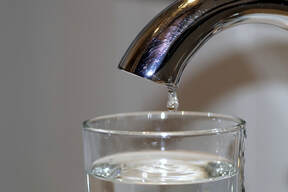 Even though most people take water for granted, it's a limited resource the planet needs. It may feel like there's an infinite amount available because of the faucet in your home or the water bottles at your grocery store, but water waste affects the whole world. As more people become aware of how their actions influence the planet, they're making changes to go green and conserve resources. One of the easiest ways to do this is to limit how much water you use every day. Read on to learn how to conserve water at home without disrupting your routine. These are simple tips anyone can use to take care of themselves and their loved ones without wasting water: 1. Scrape Your Plates After you eat a meal and take your dishes to the sink, you might pre-rinse them. Most people learn that rinsing your plates or letting them soak removes the dried food so you don't have to scrub them clean. Although this is true, it's also a waste of water when you can scrape your plates before washing them. Use your napkin or fork to clean all the leftover food and sauce off your plates and bowls. You won't need to keep the water running to clean them off, and you'll never deal with clogged drains because there won't be food in your pipes. 2. Shorten Your Showers A hot shower is a great way to wake up in the morning or relax at night, but how long do you spend washing yourself off? The average person showers for at least eight minutes, which utilizes more than 17 gallons of water with a standard shower-head. Cut your shower time down to five minutes, and you'll slice that water usage in half. As a bonus, you'll also get more time to add to your morning or evening routine. 3. Load Dishes Correctly Family members, roommates and married couples all occasionally have arguments about how to load a dishwasher. While there's always a matter of personal preference, the way you load your dishes could add to your water waste. Make sure not to overload your dishwasher by piling on bowls or stuffing the silverware basket. When it's too full, the water can't reach all the dishes, and you'll need more water to wash them a second time after you unload. 4. Save Boiling Water Think about how often you boil water. Do you make tea, pasta or even steam cook your veggies on the stove? Most Americans use 110 gallons of water per day, but you can get by on a lot less. Boil the water you need to cook your dinner and save it in a container after you drain the food. After it cools, you can reuse it to water your plants or wash spring pollen off your porch instead of turning on the garden hose. 5. Use the Shortest Cycle Most countries struggle with water conservation. However, the United States comes in second because it wastes 216 trillion gallons each year, even with the Environmental Protection Agency (EPA) educating the public. Do your part to eliminate water waste by using the shortest cycles on your washing machine and dishwasher. You'll most likely find that they clean as well as lengthier cycles, so you're not compromising cleanliness for a shorter wash time. 6. Fix Any Leaks The next time you have a few free minutes, check your faucets for any leaks. Even a slow leak adds up to unintended water waste. Look for tutorial videos online to fix it yourself or call a professional plumber to get control over your water usage. Consider Your Routine Everyone's routine looks a little different, so think about when you use water during your day. You may not do laundry very often, but enjoy taking 30-minute showers. Other people might water their lawn every day or ignore leaks. Re-think your routine and use these tips to conserve water at home. Bio: Emily Folk is passionate about environmental sustainability and more of her work can be found on her site, Conservation Folks, or follow her on Twitter for her latest updates.  People are always looking for new ways to change their lifestyle. You might want to exercise more or spend more time with friends, but you can also change your habits to live more sustainably. When someone wants to go green, they might think they need to buy an electric car or live off the grid, but there are easier ways to make a difference. Every small step adds up to make a huge impact on the earth, so start your journey at home. Check out 10 ways you can be healthier and greener at home. You don't need to spend extra time and money while you're out in town to minimize your carbon footprint and lead a healthier life. 1. Encourage Everyone to Recycle Anyone can recycle if they have the right waste bins. Create a place for plastics, glass and cardboard in your home. Talk with your family or roommates about recycling what they can. Afterward, connect with a recycling program or dump in your area to learn where to dispose of everything. 2. Buy Organic Produce When you walk through the produce section of your grocery store, do you reach for the organic products? Organic produce options don't count as Genetically Modified Organisms (GMOs) and don't use chemical fertilizers or treatments. You'll eat toxin-free, all-natural food and feel better for putting healthier food on your plate. 3. Skip Bottled Water You can find bottled water in almost any store, but plastic isn't good for the planet. In the U.S., people throw out 38 billion bottles in landfills every year. That adds up to over two million tons, so do your part to recycle bottled water or use a reusable bottle from home. 4. Adjust Your Thermostat Keeping your home warmer in the summer and cooler in the winter could reduce your energy usage by 15%, saving the earth from CO2 produced by electric plants. You'll also save money on your electric bill, which is always a big help. 5. Try Reusable Bags If you have plastic grocery bags stored in your pantry, it's time to stop using them at the store. Instead of throwing more plastic into landfills, you can sew reusable grocery bags that double as totes. 6. Grow a Garden Another way to avoid chemical-based treatments in your food is to have a garden. Plant herbs in pots on your porch or grow vegetables in your backyard. You'll know exactly what you're eating and how you grew the food when it's time to harvest. 7. Skip Chemical Cleaners The household cleaners you've always bought at the store carry chemicals down your drains and into the local waterways. You can avoid dousing wildlife with waste runoff when you make natural cleaning products with things you have at home, like lemon baking soda and distilled white vinegar. It may feel strange at first to make household cleaners, but give yourself time. Everyone has to experience the stages of habit development to lock down the habit into their new lifestyle. 8. Minimize Your Paper Use Besides cutting down trees, the paper industry pollutes the atmosphere with gas emissions like sulfur and nitrogen oxides. It's easy to minimize your paper use if you transfer your work online and only print something when it's necessary. 9. Check for Leaks When was the last time you checked your faucets for leaks? Inspect your sinks and showers and fix the leaky faucet in just a few minutes to reduce how much water your home drains from the planet. 10. Avoid Using Electronics Even when electronics like your TV or laptop are in sleep mode, they still use energy because they stay plugged in. Unplug your electronics when you don't need to use them for work or school and get active instead. You'll build your endurance, get stronger and find a more affordable electric bill at the end of the month. Consider Your Lifestyle Think about your routine and how you can become healthier and greener at home. You can sew reusable grocery bags, make household cleaners and more to do your part to live a sustainable, healthy lifestyle. Bio: Emily Folk is passionate about environmental sustainability and more of her work can be found on her site, Conservation Folks, or follow her on Twitter for her latest updates. 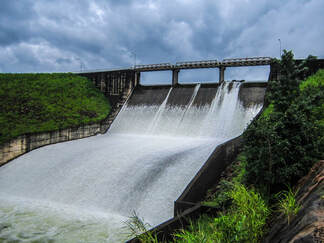 Hydropower is the process of harnessing energy from water. Dams are the most common example of hydropower, and the largest producers of this type of electricity are China, Brazil and Canada. As of 2016, this power source accounted for 71% of the world's renewable energy supply. Hydropower currently makes up 7% of total U.S. energy production, providing more power than wind or solar. While it's a renewable source, it's not without impact. The U.S. does not currently use most of its dams for hydroelectricity, and experts have criticized them in recent years due to their environmental and social impact. However, new technologies are improving how these plants operate, substantially reducing their impact on the surrounding ecosystem, specifically fish and other aquatic life. In addition to committing to other sustainable resources, there are increasingly new opportunities for the U.S. to advance hydroelectric energy production, primarily through retrofitting old plants. Innovations in renewable technology have been an integral part of discussions, as many U.S. states make promises to transition to more eco-friendly techniques. The Pros of Hydroelectric Energy Just like wind and solar technologies, hydropower has crucial pros and cons to consider. It's essential to weigh the advantages against the negative impact on the surrounding ecosystem. Impact also varies greatly depending on the type of system and scale of the project. For example, in-stream turbine technology has less of an effect than conventional dams. Zero-Carbon Hydropower is a carbon-free energy system. In comparison, coal has a carbon content of 78% and releases about 204.3 pounds of the gas per million Btu when burned. Domestic Hydropower provides a domestic source of energy, creating autonomy in local communities and reducing the need to rely on external or imported resources, such as oil. Predictable Hydropower provides reliable and consistent energy, often referred to as it's baseload power. This feature gives this energy source an advantage over wind and solar since their supply is weather-dependent. Hydropower can also store energy, offering providers control over the excess. The Cons of Hydroelectric Energy While this power source has significant advantages, you should also consider the drawbacks. Environmental Disturbance Hydroelectric plants disrupt and alter the ecosystem around them. One of the main criticisms is the impact on aquatic life, primarily fish migration and biodiversity. These issues are crucial considerations considering that dam construction can come with an irreversible effect. Sociocultural Impact Large-scale dams can damage local communities. Depending on the size of the project and the surrounding environment, the construction of hydroelectric dams can cause populations to be forcibly removed and alter the quality of drinking water downstream. The Future of Hydropower Today, workers remove more U.S. dams than build new ones. The key to promoting hydropower as a reliable and sustainable energy source is to innovate the technologies behind the infrastructure. By improving the conventional methods of producing this power and retrofitting the current infrastructure, the U.S. can tap into a powerful resource. Innovative technology within hydroelectric plants could potentially reduce greenhouse gas emissions by more than 5 billion metric tons. The next step will focus on new, smaller units that better adapt to the environment. In-stream turbine technology provides an alternative to conventional dams. Similar to historic grain mills, this system harnesses hydrokinetic energy without dramatically altering the natural flow of water. The primary benefits of in-stream turbine systems include being less ecologically disruptive, more conducive to healthy aquatic life and less impactful on the surrounding ecology. One model, the Alden turbine, focuses on fish passages, or hydraulic structures that do not impede migration. Hydropower is an underutilized technology when it comes to finding sustainable energy alternatives. The potential is expansive, and the benefits of new systems provide a reliable alternative to wind and solar options. With the innovation taking place within the industry, the opportunity to expand in the U.S. is significant. Bio: Emily Folk is passionate about environmental sustainability and more of her work can be found on her site, Conservation Folks, or follow her on Twitter for her latest updates.  We Dig Ohio is an annual, one-day summit exploring urban agriculture and community gardening in the Ohio region, and an opportunity to expand your gardening expertise through panels of experts, educational sessions and hands-on workshops. This year's We Dig Ohio Summit will have a strong emphasis on young gardeners, with the keynote presentation delivered by a panel of four accomplished young agriculturists ages 10-21. Continuing this theme, lunch will be prepared and served by the local youth gardening and culinary program, OSU Urban GEMS. The event also includes a sneak peek of the newly constructed Scotts Miracle-Gro Foundation Children’s Garden (opening to the public May 2018). In addition to the wide representation of Ohio gardeners, the summit will also feature nationally renowned leaders in the industry. These presentations will discuss the latest research, best practices, innovations and trends -- in not only community gardens and school gardens, but urban agriculture at large. Register now to reserve your place at the table. For details or to register: https://www.fpconservatory.org/events/we-dig-ohio-urban-agriculture-community-garden-summit/ 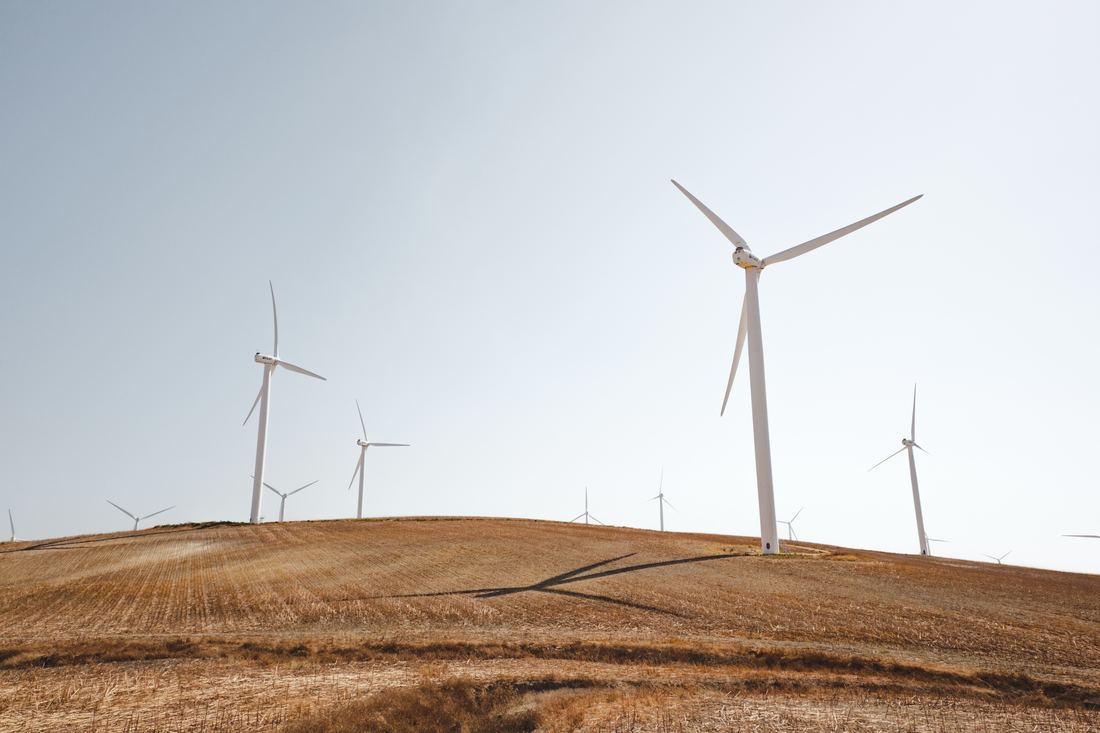 Efficient Power Use in Off Grid Properties When you take your home off-grid, you are making a bold, brave statement for the benefit of our world’s environment. In a home on the grid, the residents are essentially subsidizing their renewables with electricity generated by the network. Those houses do not need to conserve their power using energy efficiency techniques because if they run out of power, the lights will not go out. However, if a disconnected home drains all its energy, then it has to sit in the cold and dark until it creates more. What can you do to stop this ruining your dream of a life powered by renewables? Here are the top tips, and some of them are so old-fashioned you will wonder why you were not doing them already! Put the Lights Out Since illuminating your home can take up to 10% of the energy your home uses, something that your father may have done is appropriate: roam the hallways turning out the lights to save energy. You could even automate this process by installing a panel to control the times your lighting goes on and off. This controller also deters burglars while your house is standing empty. Although LED bulbs are expensive, it still works out positively in a cost-benefit scenario when you replace your five most used bulbs. Where you place the lights is also extremely important concerning efficiency. Illuminating corners lights two walls, doubling your energy efficiency at a stroke. Start Sun Worshiping In Ohio, there can be up to 15 hours of light per day. That means correctly placed windows can reduce your dependence on electricity, but you are still able to see where you are going when roaming your abode. Shading can diminish the amount of sunlight on particularly bright days or can reflect the light onto shaded areas. Switching your window panes to low E glass will also remove the heat from a sunny day if your home suffers from that. Hot or Cold, Energy Always Needed Proportionally one of the largest consumers of energy in the home, following these heating and cooling tips could see a 40% reduction in your electricity use. One of the most basic savings is to open the window instead of switching on the air conditioner. Use your knowledge of wind movements around your property to better place your windows for cooling. Heating your home with a wood fire will eliminate any electricity from the heating equation. Insulation removes extremes of hot and cold affecting your home and can reduce your energy footprint by up to 50%. As a beneficial side-effect, your house will be less susceptible to damp. Leave your thermostat between 18 and 20 Celsius in the winter. Each degree higher can increase your energy use by 10%. Similarly, in summer leave the dial above 26 C. Turn Off Your Appliances Having your appliances on by default can burn up as much energy as your lighting does. Turning them off is an instant saving, but which machines are best to pull the plug? Your electricity is DC already, and appliances that run on DC save you 10% of the electricity by not converting it to AC. Fridges should operate between 4 and 5C, whereas freezers are most efficient between -18 and -15C. Alternative Back Up There are moves to bring Hydrogen production to the home. Your house could have a fallback, renewable generator in the form of Hydrogen Fuel Cells and your worries of a blackout would recede. 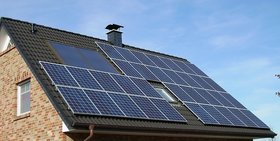 We’re all looking to green our lives as much as we can, and if we can save money into the bargain too - then that’s all to the good. As we head into retirement and our senior years, making the most of our money is even more important. Many people are switching to solar power to help them save the environment and their bank balances too. Retirees investing in solar power might want to think about using a lower risk option for solar power, but the gain is that by installing, monetarily you’ll get consistent and increasing returns which are similar to the sorts of returns that are associated with stocks and bonds. However, you won’t get the volatile and unpredictable results you sometimes can from investing in those markets. Here are the benefits of investing as you start to think about retiring. Save money on your bills OK, so an obvious point to start with, but it can’t be overstated. Yes, there’s an initial outlay to kit your home out - but after that your electricity bill will either be drastically reduced or cut totally, depending on your use. That money can be put to other good uses. Think about the holiday you always wanted, or the extra income it will give you to spend on your family and loved ones. Your house value could increase An investment in something like solar power could mean that the value of your property increases. There are studies to show that many buyers are willing to pay more for a house that has seen fit to invest in solar power to conserve energy and reduce household expenditure in the long run. As more and more people learn about the benefits of solar power and seek to invest themselves, you’ll know you’ve done the right thing. Long term solar can generate income for you Some states have a market for something called solar renewable energy certificates, so you could potentially earn money for selling them. Another point to consider is that there are some utilities that will offer production-based incentives. These are handy because they will pay you for the electricity your panels create. It stops energy company price hikes on your bills Solar power will of course protect you against any future price hikes on your energy bills. If you use solar panels to generate your own power, you’ll make huge savings and not be at the mercy of huge conglomerates who push their prices up every year. In 2015 alone figures show that some companies increased their prices by as much as 9%. Keeping energy bills constant is one thing less to worry about! Any money you make from solar power isn’t taxable Unlike the returns you see from more traditional investments, your returns from solar come in the form of savings, rather than a fixed income - unless you’re using solar renewable energy certificates. This means they are not subject to taxation. |
Sponsored By:
Archives
January 2023
Categories
All
|

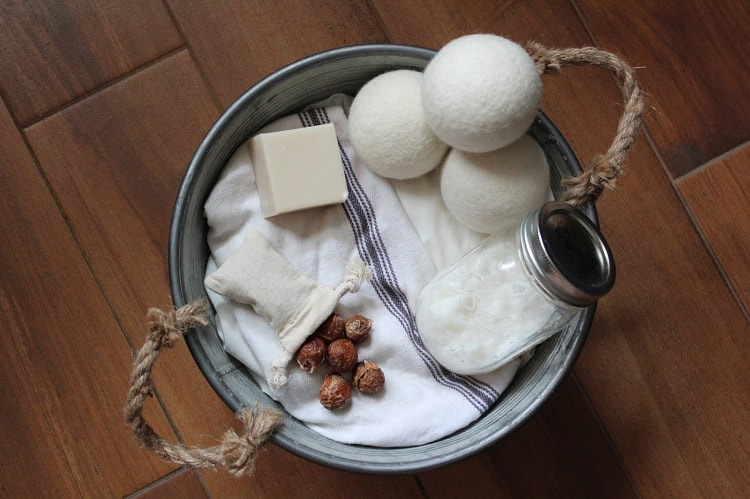
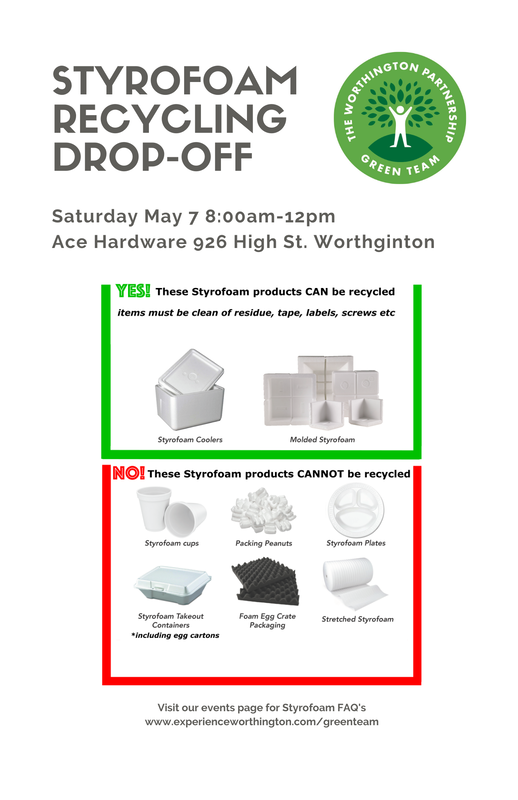

 RSS Feed
RSS Feed